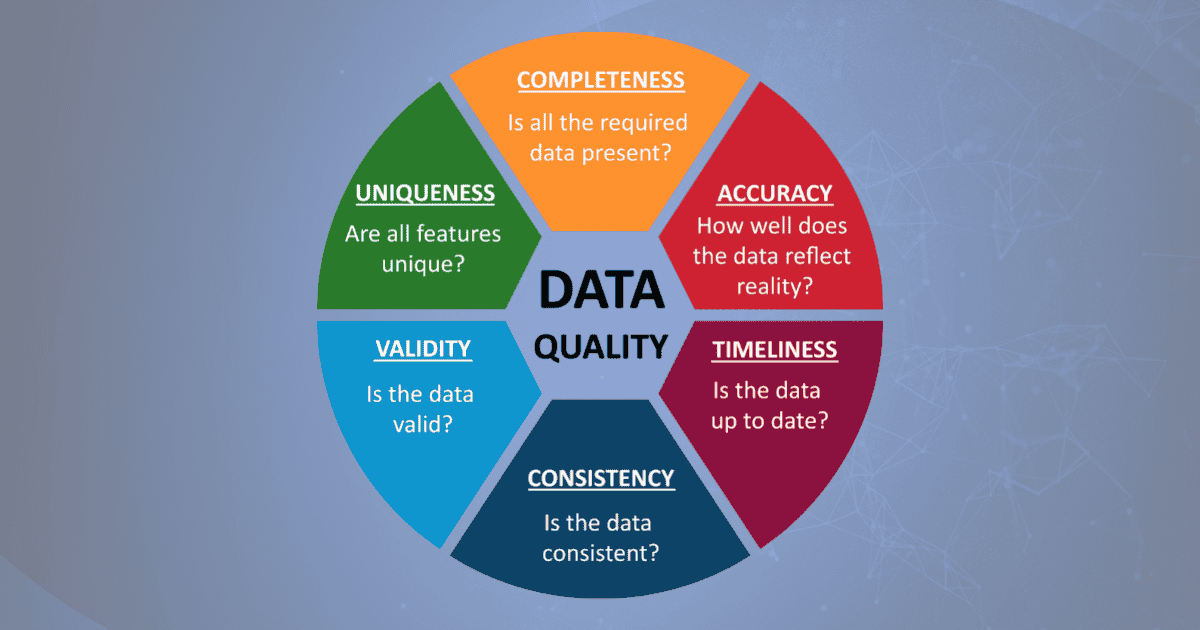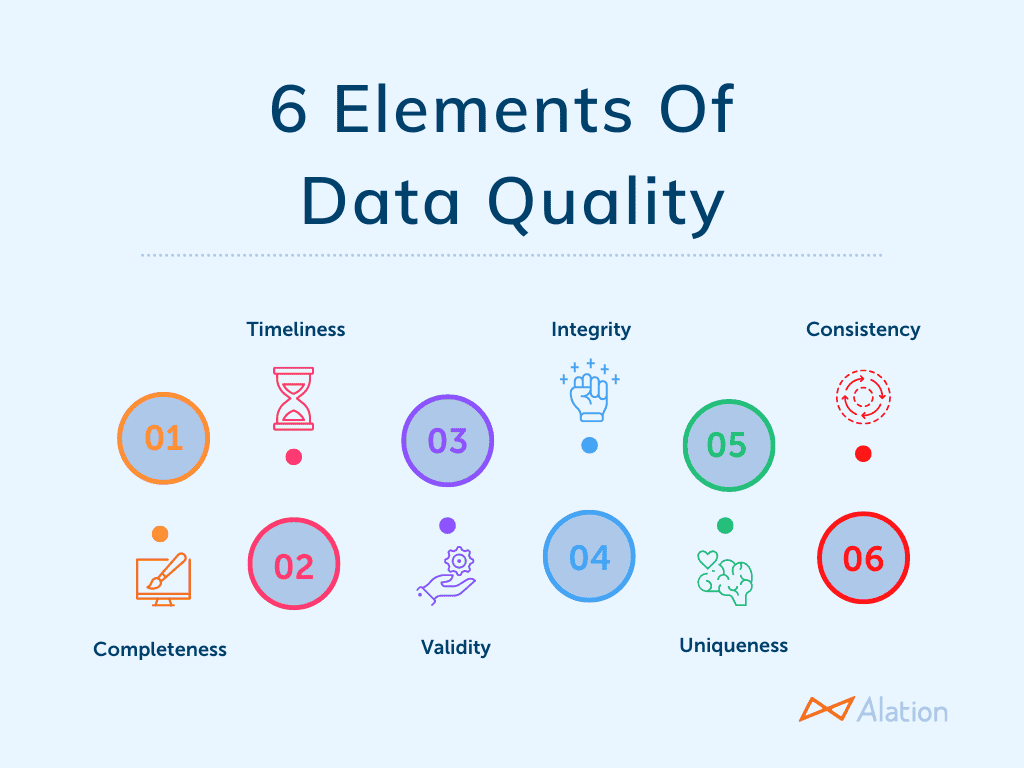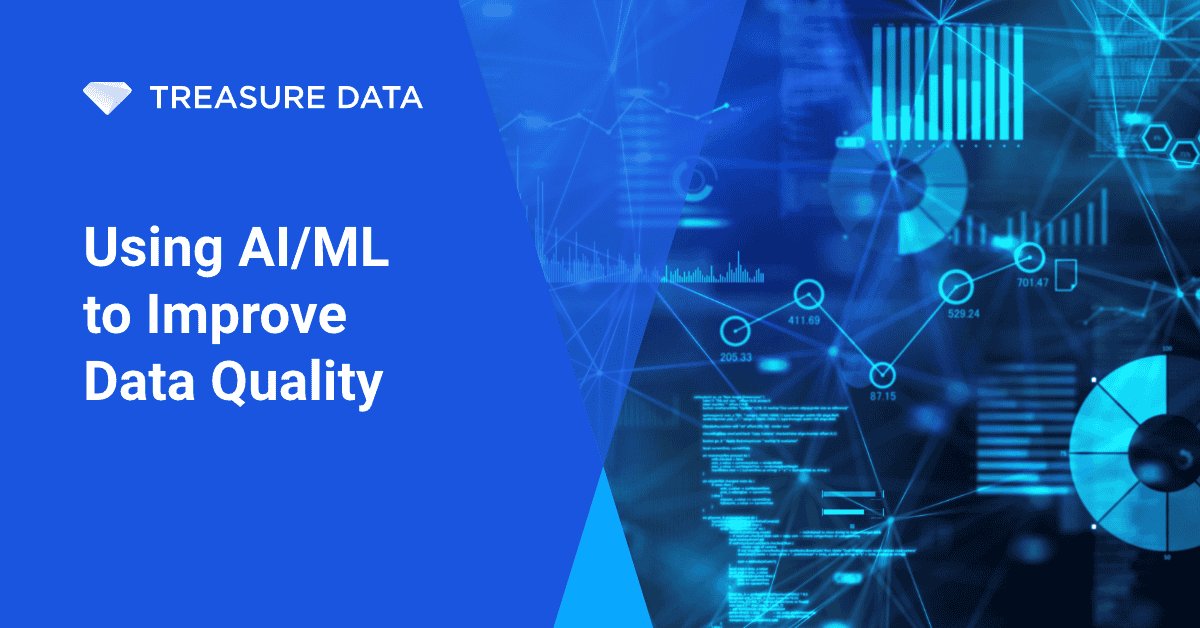How to Scale Your Data Quality Operations with AI and ML: In the fast-paced digital landscape of today, data has become the cornerstone of success for organizations across the globe. Every day, companies generate and collect vast amounts of data, ranging from customer information to market trends. However, the mere accumulation of data is not enough; ensuring data quality is paramount.
In this article, we delve into the significance of data quality, how organizations are leveraging various tools to enhance it, and the transformative power of Artificial Intelligence (AI) and Machine Learning (ML) in elevating data quality to new heights.
The Significance of Data Quality
Before we dive into the realm of AI and ML, it’s crucial to understand why data quality holds such immense importance. Data serves as the backbone of informed decision-making, and the accuracy, consistency, and reliability of data directly impact an organization’s operations, strategy, and overall performance.
Informed Decision-making
High-quality data empowers organizations to make informed decisions with confidence. It ensures that the insights drawn from data analysis are accurate and actionable.
Enhanced Customer Experiences
Data quality is integral to understanding and serving customers better. Accurate customer profiles and behavioral data enable personalized experiences and targeted marketing efforts.
Regulatory Compliance
Many industries are subject to stringent data protection regulations. Ensuring data quality is not only a matter of operational efficiency but also legal compliance.
Cost Savings
Poor data quality can lead to costly errors, such as shipping the wrong products or targeting the wrong audience with advertising campaigns. By maintaining data quality, organizations can reduce these costly mistakes.
Tools for Enhancing Data Quality
In the quest for impeccable data quality, organizations have turned to an array of tools and methodologies. These tools are designed to cleanse, validate, and enrich data, ensuring it meets the highest standards.
Data Cleaning Tools
These tools automatically identify and rectify errors in datasets. They can correct misspellings, eliminate duplicate entries, and standardize data formats.
Data Validation Software
Validation tools ensure data accuracy by verifying it against predefined rules. This helps in identifying inconsistencies and inaccuracies within the data.
Data Enrichment Services
Enrichment tools augment existing data with additional information, such as demographics, geolocation, or social media profiles. This enhances the depth and usefulness of the data.
Data Governance Frameworks
Establishing a robust data governance framework ensures that data quality is maintained consistently across the organization. It defines roles, responsibilities, and processes for data management.
6 Elements of Data Quality
Accuracy
Data accuracy measures how well the data reflects the real-world entities or events it represents. Accurate data is free from errors, inconsistencies, or discrepancies. It should closely match the true values or facts.
Completeness
Completeness refers to the extent to which data captures all the relevant information for a particular purpose. Incomplete data can lead to gaps in analysis and decision-making. It’s essential to ensure that data is not missing critical elements.
Consistency
Data consistency ensures that data is uniform and coherent across different sources or databases. Inconsistent data may contain conflicting information or use different formats and standards, making it difficult to integrate or analyze effectively.
Timeliness
Timeliness relates to the relevance of data at a specific point in time. For some applications, up-to-date data is critical, while others may require historical data. Ensuring that data is collected and updated in a timely manner is crucial for its usefulness.
Reliability
Reliable data can be trusted to be accurate and consistent over time. It should be free from bias, and the methods used to collect and process the data should be well-documented and transparent.
Relevance
Relevance measures whether the data is appropriate and valuable for the intended purpose. Irrelevant or extraneous data can clutter databases and hinder decision-making. It’s important to ensure that the data collected aligns with the goals and objectives of the analysis or application.
By addressing these six elements of data quality, organizations can enhance the trustworthiness and utility of their data, leading to more informed and effective decision-making.
Automatic Data Capture: Streamlining Data Entry with AI
AI has the remarkable ability to extract data without manual intervention, allowing employees to focus on more critical tasks, such as customer interactions.
Identifying Duplicate Records: Maintaining Data Integrity
Duplicate data entries can lead to outdated records, severely impacting data quality. AI can play a crucial role in detecting and eliminating duplicate entries within an organization’s database. This is particularly challenging in large companies, where identifying recurring entries can be a complex task. Implementing intelligent systems capable of identifying and removing duplicate keys can significantly enhance data quality.
One prime example of AI implementation is found in Salesforce CRM, which boasts default intelligent functionality to ensure that contacts, leads, and business accounts remain clean and free from duplicate entries.
Detecting Anomalies: Minimizing Human Errors
Even a minor human error can have a substantial negative impact on data quality within a Customer Relationship Management (CRM) system. AI-powered systems are adept at detecting and rectifying defects within a dataset. Machine learning-based anomaly detection plays a crucial role in enhancing data quality by identifying and rectifying irregularities.
Third-Party Data Inclusion: Expanding Data Horizons
AI not only corrects and maintains data integrity but also contributes to data enrichment. Third-party organizations and government entities can significantly enhance the quality of a management system and Master Data Management (MDM) platforms by providing richer and more comprehensive data. AI assists in suggesting what data to acquire from specific sources and establishing connections within the data.
Algorithms for Data Quality Enhancement
Choosing the right algorithms and queries is imperative for companies dealing with extensive datasets.
Random Forest: A Versatile Machine Learning Algorithm
Random Forest is a flexible and widely machine-learning algorithm known for its simplicity and reliability. It can be employed for both regression and classification tasks.
How it Works
Random Forest creates a “forest” of decision trees and combines their outputs to achieve more stable and accurate predictions.
Advantages of Random Forest
- Versatility: Random Forest excels in both classification and regression tasks.
- Feature Importance: It provides clear insights into the importance of input features.
- Reliability: Known for producing consistently accurate predictions.
Leveraging AI and ML for Data Quality
As data volumes continue to grow, the manual efforts required to maintain data quality become overwhelming. This is where AI and ML step in, revolutionizing the way organizations ensure data quality.
1. Automated Data Cleaning
AI algorithms can automatically identify and clean data inconsistencies and errors, significantly reducing the manual effort required.
2. Predictive Data Quality
Machine learning models can predict data quality issues before they become critical. This proactive approach prevents errors before they impact operations.
3. Natural Language Processing (NLP)
NLP algorithms can analyze unstructured data, such as customer reviews or social media sentiment, to extract valuable insights and enhance data quality.
4. Anomaly Detection
Machine learning algorithms excel at identifying anomalies in data. They can flag unusual patterns or outliers, which may indicate data quality issues.
5. Continuous Improvement
AI and ML enable continuous monitoring and improvement of data quality. As data evolves, these technologies adapt to maintain high standards.
Tabular Representation of Using AI/ML in Data Quality Management
Certainly, here’s a tabular representation of where Artificial Intelligence (AI) and Machine Learning (ML) are used in Data Quality Management:
| Aspect of Data Quality Management | Application of AI/ML |
| Data Profiling and Assessment | – Automated data profiling using ML algorithms to identify anomalies and inconsistencies in data. – Predictive analytics to assess data quality issues before they become critical. |
| Data Cleansing and Standardization | – Automated data cleansing using AI algorithms to correct errors, remove duplicates, and standardize formats. – Natural Language Processing (NLP) for text data standardization. |
| Data Integration and Matching | – ML-based record linkage and entity resolution to accurately match and merge similar data from different sources. – Automated data integration using AI to combine and consolidate data seamlessly. |
| Data Enrichment | – AI-driven data enrichment by adding missing information from external sources such as social media, APIs, and databases. – Predictive modeling to fill in gaps in data. |
| Data Quality Monitoring | – Real-time monitoring of data quality using AI-powered anomaly detection and alerting systems. – Continuous assessment and reporting of data quality metrics through ML algorithms. |
| Data Governance | – AI-based classification and tagging of data to enforce data governance policies. – ML-driven access control and data privacy enforcement. |
| Data Quality Assessment | – Automated generation of data quality scores and reports using ML models. – Predictive analytics to forecast data quality trends. |
| Data Quality Remediation | – Automated suggestions for data quality improvement using AI recommendations. – ML-driven root cause analysis of data quality issues. |
| Data Quality Reporting | – AI-driven generation of data quality dashboards and visualizations. – ML-based predictive reporting on data quality trends and issues. |
| Customer Data Quality | – AI and ML models for customer data validation, deduplication, and segmentation. – Personalization and recommendation engines for improved customer data quality. |
FAQs
How AI and ML Can Improve Data Quality?
AI and ML can enhance data quality by automating data cleansing, identifying anomalies, and improving data accuracy through predictive analytics. They streamline data preprocessing, reducing errors, and ensuring more reliable insights for decision-making.
How to Use AI to Improve Quality Control?
To enhance quality control, AI can be applied through image recognition, sensor data analysis, or natural language processing. It helps in real-time monitoring, identifying defects, and automating feedback loops, resulting in more consistent and efficient quality assurance processes.
How Do You Evaluate Data Quality in Machine Learning?
Evaluating data quality in machine learning involves assessing data completeness, accuracy, consistency, and relevancy. Techniques like data profiling, visualization, and statistical analysis help in identifying and addressing data issues before model development.
How to Use AI in Quality Assurance?
AI can optimize quality assurance by automating test case generation, executing repetitive tests, and monitoring software performance in real time. Machine learning algorithms can predict defects, enabling proactive defect prevention and efficient quality assurance practices.
Conclusion
The significance of data quality cannot be overstated in today’s data-driven world. Organizations must recognize the critical role it plays in decision-making, customer experiences, compliance, and cost savings. The tools and technologies available today, especially AI and ML, offer transformative capabilities to elevate data quality to unprecedented levels.
By harnessing the power of AI and ML, organizations can not only maintain data quality but also gain a competitive edge through faster, more accurate decision-making. As the digital landscape continues to evolve, those who prioritize data quality will undoubtedly lead the way.
So, whether you are a startup or an established enterprise, embracing AI and ML for data quality is not just a choice; it’s a necessity in the pursuit of success in the data-driven age.














